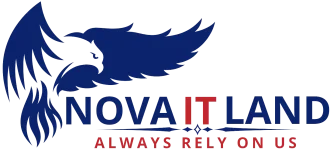“`html
Understanding TAM, SAM, and SOM for Business Growth
When it comes to scaling a business, knowing your market size is crucial. Concepts like Total Addressable Market (TAM), Serviceable Available Market (SAM), and Serviceable Obtainable Market (SOM) help businesses define opportunities and strategize growth. By breaking down these key market metrics, companies can make data-driven decisions to maximize business growth.
Whether you are a startup looking for investors, or an established company planning expansion, understanding TAM, SAM, and SOM is essential. This framework ensures you allocate resources effectively while setting realistic goals. Let’s dive deep into these concepts and explore how they contribute to sustainable scaling.
What is TAM, SAM, and SOM?
Total Addressable Market (TAM)
TAM represents the overall demand for a product or service in a given market. It estimates the total revenue a company could generate if it achieved 100% market penetration. For instance, if you develop a ride-sharing app, your TAM would include all potential users worldwide who could benefit from such a service.
To calculate TAM, businesses often use industry reports, government data, and market research studies. A common method involves using top-down analysis (data from industry leaders) or bottom-up insights (own sales data extrapolated to a larger audience). Understanding TAM helps companies and investors gauge the full market potential before diving into strategy development.
Serviceable Available Market (SAM)
SAM is a subset of TAM. It represents the portion of the market a business can realistically serve based on geographical, regulatory, or competitor constraints. If your ride-sharing app is initially launching in North America, your SAM would only include that region’s users instead of the entire global market from the TAM calculation.
Analyzing the SAM ensures your business focuses on market segments where it has a viable opportunity to compete. Defining this scope helps in better resource allocation and tailored marketing efforts, leading to efficient scaling strategies.
Serviceable Obtainable Market (SOM)
SOM narrows it down even further—it represents the revenue a business can realistically capture in the short term. If your North American ride-sharing app only has the capacity to serve three major cities initially, your SOM would include potential customers in those cities.
This metric is useful for short-term revenue projections and operational planning. By identifying SOM accurately, businesses can fine-tune their go-to-market strategies and ensure feasible growth expectations that align with actual industry conditions.
Why TAM, SAM, and SOM Matter
These market sizing concepts form the foundation of strategic planning. TAM helps identify revenue potential, SAM clarifies where a business should compete, and SOM sets realistic goals. Together, they provide clarity in business decisions. Businesses that leverage TAM, SAM, and SOM effectively tend to optimize their market-entry strategies and secure investments more convincingly.
How to Calculate TAM, SAM, and SOM
Understanding Top-Down and Bottom-Up Approaches
Two common methodologies are used to calculate market sizes: top-down and bottom-up approaches. The top-down approach relies on existing industry research, projecting a percentage of market share based on competitor insights. The bottom-up method, however, builds numbers from actual sales figures and realistic market penetration metrics, offering a more precise estimation.
The best practice is to combine both approaches to create a balanced and reliable market size estimate. Let’s break down each calculation method further.
Step-by-Step TAM Calculation
- Identify the industry-wide market size using authoritative market research reports.
- Determine the total sales or revenue of companies operating within that industry.
- Estimate how your product or service fits within that industry to gauge total opportunity.
Step-by-Step SAM Calculation
- Define your target customer segment based on location and availability.
- Remove portions of the market constrained by regulations or economic conditions.
- Determine the feasible market you can pursue given operational and financial limitations.
Step-by-Step SOM Calculation
- Analyze your business model and operational capacity for the short term.
- Estimate how many customers you can serve realistically at the moment.
- Project revenue potential based on competitor pricing and market share forecasts.
Using TAM, SAM, and SOM for Business Expansion
Once companies establish market size estimates, they must align their strategies accordingly. Here’s how TAM, SAM, and SOM can help drive business expansion.
Attracting Investors
Investors want to see data-driven strategies before funding a business. Presenting accurate TAM values demonstrates large-scale growth possibilities, while realistic SOM assessments showcase attainable milestones. This combination builds investor confidence.
Refining Marketing Strategies
Knowing your TAM helps define brand positioning, identifying industry-specific trends. SAM clarifies key geographies and customer segments, allowing businesses to focus marketing efforts efficiently. SOM ensures marketing budgets are spent on acquiring feasible customers that generate actual revenue.
Product Development and Growth Planning
By aligning product features and services with SAM analysis, businesses ensure relevance in target markets. Using SOM data, companies scale operations gradually while maintaining revenue consistency, preventing overexpansion that could negatively impact financial stability.
Common Challenges When Analyzing TAM, SAM, and SOM
While market sizing is crucial for growth, there are some common pitfalls businesses should avoid.
Overestimating TAM
Many businesses rely on broad industry reports that reflect total market demand, failing to account for real-world constraints. This leads to unrealistically high revenue expectations.
Underestimating SOM
Focusing only on large-scale predictions without assessing feasibility can mislead businesses into pursuing unattainable goals. A realistic approach ensures steady, incremental growth.
Ignoring Market Dynamics
Industry trends shift rapidly with emerging technologies and competitive forces. Without continuously reevaluating TAM, SAM, and SOM, businesses risk becoming outdated and ineffective.
Final Thoughts on Maximizing Business Growth
Understanding TAM, SAM, and SOM is not just about theoretical estimates—it’s a critical process that ensures business growth aligns with reality. By correctly analyzing these metrics, companies can create effective market-entry strategies, attract investors, and optimize product development. Strategic planning based on realistic market expectations leads to sustainable growth and long-term success.
If you’re looking to develop a strong market strategy and enhance digital marketing efforts, check out our business solutions to help scale effectively.
“`
